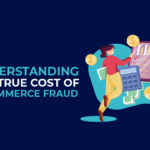E-commerce fraud, a broad phrase used to describe specific activities involving online fraud or scams, makes use of the internet to obtain traffic in fraudulently acquired assets. This type of fraud poses a serious risk to an online merchant’s business. Not only can e-commerce fraud cause financial loss, but it can also be disruptive to business operations and carry serious legal and reputational consequences.
To help you and your business become victims of fraudulent activity, this post will explain the main types of retail fraud and detail effective e-commerce fraud prevention techniques.
Table of Contents
How Is E-commerce Fraud Committed?
- Payment Fraud
- Friendly Fraud
- iii. Account Takeover Fraud
- Prevention of E-commerce Fraud
- Stay Safe From E-commerce Fraud
How Is E-commerce Fraud Committed?
E-commerce fraud is committed in various ways. The basic idea involves nefarious actors carrying out criminal deception during an internet transaction, defrauding either the customer, the ecommerce merchant themselves, or a third-party in the process.
The three main types of commerce scams that are frequently leveraged by fraudsters are discussed below:
1. Payment Fraud
E-commerce payment fraud is any fraudulent activity aimed at getting unauthorized access to consumer information and accounts or obtaining goods and services without paying for them. E-commerce payment fraud can happen at any point between the consumer, the merchant, and the bank. For example, a hacker may get their hands on a customer’s credit card details and make unauthorized purchases – an activity known as e-commerce credit card fraud.
2. Friendly Fraud
E-commerce friendly fraud involves the fraudster making a purchase from a store, receiving the product, and filing an unauthorized credit card chargeback – claiming that the product was in some way faulty, damaged, or never arrived. The credit card administrator, in most cases a bank, determines that a legitimate chargeback claim has been filed, refunds the cost of the transaction, and subsequently the fraudster keeps both the goods and the original purchase amount.
3. Account Takeover Fraud
Account takeover fraud involves obtaining sensitive information like passwords, financial credentials, and payment information of a customer at an e-commerce website via various methods (such as phishing schemes or purchased on the dark web) to take control of a user’s account. The method of attack usually involves the perpetrators sending emails, making phone calls, or sending text messages to the victim that carry attached viruses files. This allows them to either change the details of the victim’s account, obtain access to other accounts owned by the user, make purchases using their funds, or even directly withdraw their money.
How to Prevent E-Commerce Fraud
There are several effective e-commerce fraud solutions and e-commerce fraud protection tools that you can employ to minimize the risks posed by e-commerce fraudsters, such as the following:
- Use a tool like FUGU to help identify and prevent fraud.
- Leverage SSL (Secure Socket Layer) encryption to protect your customers’ information.
- Make use of a third-party password manager to keep all your passwords safe.
- Check the order’s IP address to ensure the purchaser is in the same country as their selected credit card using monitoring capabilities like those possessed by FUGU.
- Track transaction data, card numbers, billing and shipping addresses, and device signatures with fraud prediction capabilities like those of FUGU.
Stay Safe From E-Commerce Fraud
As online e-commerce transactions become more and more common, it is vital to protect your business from fraudulent activity. Thankfully though, with the fraud management and protection strategies detailed here, you can be sure to minimize and mitigate the risks posed by e-commerce fraud.




